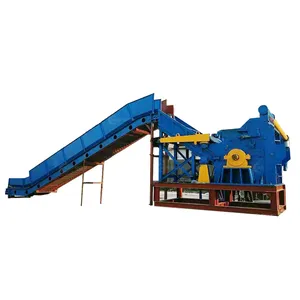
Scrap Metal Recycling Machine Scrap Steel Iron Aluminum Motor Stator Scrap Recycling Machine Hammer Mill Crusher Metal Shredder










Aluminum ingot scrap, a versatile material predominantly sourced from the recycling of aluminum products, serves as a cornerstone for various industries. This category encompasses the remnants of aluminum ingots, which are processed forms of aluminum known for their malleability and lightweight properties. The scrap is collected and repurposed, providing a sustainable option for aluminum utilization.
The diversity of aluminum ingot scrap is evident in its various forms, including but not limited to, hollow tubes, angles, and framing systems. Each type caters to specific industrial requirements, such as construction or automotive manufacturing. The scrap's adaptability is further showcased in its availability in multiple shapes and sizes, ready to be transformed into functional products.
Aluminum ingot scrap is integral to numerous applications. In the automotive sector, it contributes to the production of lightweight, fuel-efficient vehicles. The electronics industry also relies on this material for its conductivity and anti-corrosive properties. Additionally, its utility extends to construction, where it is used in creating durable and aesthetic building components.
The inherent characteristics of aluminum ingot scrap include its lightweight nature and ease of handling, making it a preferred material across various manufacturing processes. Its capacity to melt at lower temperatures allows for energy-efficient recycling, leading to cost-effective production cycles. Moreover, the scrap's high purity levels ensure minimal contamination, which is crucial for maintaining the integrity of the end products.
Typically, aluminum ingot scrap is composed of alloys with temper ranges from T3 to T8, enhancing its strength and durability. The quality of the scrap is maintained through meticulous polishing, resulting in a product that not only exhibits a high degree of shine but also withstands the rigors of transport and handling. This scrap can be readily alloyed with other metals to produce materials with tailored properties for specific applications.
The use of aluminum ingot scrap reflects a commitment to environmental sustainability. By recycling aluminum, industries can significantly reduce their carbon footprint, conserve natural resources, and support the circular economy. The scrap's recyclability does not compromise its quality, ensuring that the material remains a reliable resource for future generations.